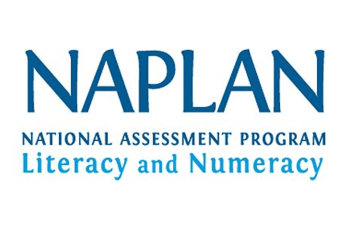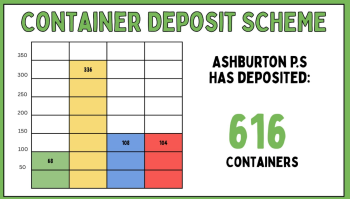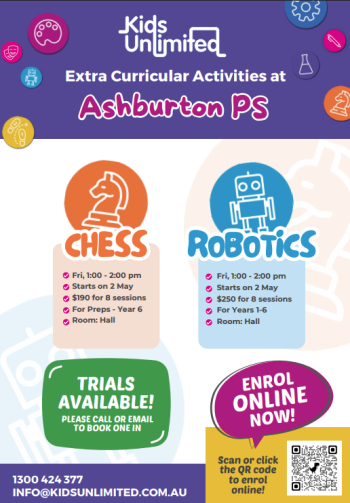
Colour Run approaches
We are on the home stretch for our Colour Run, due to take place this coming Monday, March 24th.
We have just ticked over $20,000 raised so far which is a great effort, but we really want to get up to that magical $30,000 mark. To try to get that little bit more, the organisers have promised that of we do reach $30,000, that I, as principal, WILL BE SLIMED.
Now, there's still a long way to go to reach that mark, so I'm feeling pretty comfortable. But who knows? Maybe we could reach that mark! The only way it's going to happen and I'm going to end up with slime all through my hair is for people to get donors for the run! If you child hasn't made an account it's not too late, head over to https://www.schoolfundraising.com.au/ and start collecting!
We encourage you to come and watch the event on the oval. The rundown for times will be -
2pm Grade 5/6 Runs
2:25 pm Grade 3 / 4 Run
2:50 pm Grade 1/ 2 Run
3 pm Preps Run

NAPLAN
Our two week block of NAPLAN testing concluded with Year 3 and 5 students completing the Conventions of Language and Numeracy tests this week. For many students, NAPLAN can be an exciting time where they enjoy the challenge of the adaptive tests. For others though, it can create feelings on anxiety and doubt. Our Year 3 and 5 teachers have a done a wonderful job in supporting all of our students over the last fortnight and I thank them for that. Also we thank Janet Lai who has been co ordinating NAPLAN across the school this year as she organised technology and timetables to ensure it all came together.
Online Safety
Phones, tablets, and other tools that access the internet can be amazing tools for communicating and socialising but unfortunately, they can also present challenges for children and their peers. Especially, regarding children’s use when communicating with each other.
It is up to you as parents to have this conversation with your child and to make a decision as to whether they’re ready for social media and messaging or not. Whether they are using Messenger, Snapchat, Facebook, TikTok or Whats App, it is important to speak to your child about the risks online, posting messages, chatting or responding to someone online, especially in anger or on impulse. Ask them to think before they post anything, accept a friend request or become part of a group chat.
While much of the time it can function positively as a way for young people to interact, we have seen many instances when the comments can become aggressive, demeaning or inappropriate in a sexual manner. This is often the point that it is brought to our attention, and we need to intervene and contact families.
While it is important for students to understand the issues and difficulties around social media use, it is just as important for you as parents to understand too. The ways you may use social media may be very different to how your child will interact online. With new sites and games gaining prominence each month, it is difficult to keep up. Resources such as https://www.commonsensemedia.org/social-media are useful tools to keep yourself educated.
Having educated yourself and your child on the dangers and etiquette of the online world, it is important to continue to monitor how your child is interacting online. Supervision remains a vital part of ensuring your child's online safety and wellbeing.
It is extremely difficult for a school to manage incidents that may occur online when the it occurs outside of school hours. Yet we do understand there can be a flow on effect into school that we will need to manage as best we can. On the whole, school will continue to provide Cyber Safe information and lessons to students and families; ask students and parents to read through and sign our school’s Internet Agreement; refer to our ICT Matrix and adhere to the current Mobile Phone Policy.
Have a conversation with your child to ensure they know they have reporting pathways if something negative happens online. Make sure your child knows to come to you with a problem when it occurs, so you can help. Whether something is happening on their accounts, or on a friends’ account they need to know to report it to you and where else and who else they can report it to.
The most important thing in this is communication. Together, we need to talk about how to treat others online with respect and what is and isn’t appropriate online behaviour.
eSafety’s Top 5 online safety tips for kids and How to report cyberbullying material. The eSafety Parents pages on our website have more tips and resources about the use of digital technology at home.
eSafety programs
Explore the huge range of advice and resources at our national online safety hub, esafety.gov.au – we have programs tailored for all ages.
- eSafety Parents — Advice for parents and carers to help children have safe experiences online.
- eSafety Kids — A platform for kids to learn about online safety in a way they can relate to.
eSafety Young People — A platform for older children to learn about online safety in an environment that appeals to them.
Justin Hone
Principal









